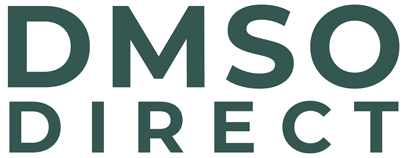How to Sterilize DMSO: A Technical Guide
When working with DMSO (dimethyl sulfoxide) in sterile applications, proper sterilization protocols are essential. While pharma-grade DMSO meets high purity standards, it is typically not supplied sterile and requires additional processing for sterile applications.
Understanding DMSO and Sterility Requirements
DMSO is commonly supplied as pharma-grade material, meaning it meets pharmaceutical purity standards but is not sterile. Sterility becomes critical in applications involving:
- Cell culture work
- Tissue processing
- Pharmaceutical compounding
- Research requiring sterile conditions
- Any application where microbial contamination could compromise results
Sterilization Methods
Method 1: Sterile Filtration (Recommended)
Sterile filtration through 0.2 μm membranes is the preferred method for sterilizing DMSO solutions.
Equipment Required:
- 0.2 μm sterile syringe filters (PES or PTFE membrane)
- Sterile syringes (appropriate volume)
- Sterile collection containers
- Sterile caps/closures
Procedure:
- Work in a sterile environment (laminar flow hood preferred)
- Use aseptic technique throughout the process
- Draw DMSO into sterile syringe
- Attach 0.2 μm sterile filter to syringe
- Filter DMSO into pre-sterilized container
- Seal immediately with sterile closure
- Label with sterilization date and method
For larger volumes (>10 mL):
- Use bottle-top filters with vacuum manifold
- Ensure all components are sterile
- Filter directly into final sterile containers
Method 2: Purchase Pre-Sterilized DMSO
Commercial sterile DMSO is available from laboratory suppliers (e.g., Sigma-Aldrich D2438). This option provides:
- Guaranteed sterility with certificates of analysis
- Eliminates contamination risk during processing
- Consistent quality batch-to-batch
- Higher cost per unit
Container Sterilization
Glass Containers
Autoclave Method:
- Remove caps and closures
- Autoclave empty glassware at 121°C for 15-20 minutes
- Allow to cool in sterile environment
- Handle with sterile technique only
Dry Heat Method:
- Clean, dry glassware in dry heat oven
- Heat to 160-170°C for 2-4 hours
- Cool slowly to prevent thermal shock
Plastic Containers
- Use pre-sterilized disposable containers when possible
- If reusing, follow manufacturer’s sterilization guidelines
- Some plastics may not withstand autoclaving temperatures
Critical Considerations
Droppers and Dispensing Equipment
All dispensing equipment must be sterilized using the same methods as containers. Glass droppers can be autoclaved separately, while plastic droppers should be purchased pre-sterilized or replaced with sterile alternatives.
Maintaining Sterility
- Work in controlled environment (laminar flow hood)
- Use proper aseptic technique
- Minimize exposure time to ambient air
- Store in sterile, sealed containers
- Use sterile sampling techniques for aliquoting
Quality Control
- Consider sterility testing for critical applications
- Document sterilization methods and dates
- Establish expiration periods for sterile stocks
- Monitor for visible contamination regularly
What NOT to Do
Avoid These Methods:
- Autoclaving filled glass bottles – Risk of thermal shock, breakage, and seal failure
- Boiling – Insufficient for reliable sterilization
- Chemical sterilization – May introduce contaminants or react with DMSO
- UV sterilization – Limited penetration and effectiveness for liquids
Storage of Sterile DMSO
- Store at room temperature in original sterile container
- Protect from light if using clear glass
- Maintain sterile technique when accessing
- Consider single-use aliquots for repeated sampling
- Label with sterilization date and method
Troubleshooting
Filter Clogging:
- Use appropriate membrane type (PES recommended for DMSO)
- Pre-filter if particulates are present
- Consider multiple filtration steps
Container Breakage:
- Allow gradual temperature changes during sterilization
- Use borosilicate glass rated for thermal cycling
- Consider pre-sterilized plastic alternatives
Contamination:
- Review aseptic technique
- Verify sterility of all components
- Consider environmental monitoring
- Test sterility when in doubt
Conclusion
Sterile filtration remains the most reliable method for sterilizing DMSO while maintaining its integrity. When combined with proper container sterilization and aseptic handling techniques, this approach provides the sterile DMSO required for critical applications. Always validate your sterilization procedures and maintain detailed documentation for quality assurance purposes.
For applications requiring guaranteed sterility with full documentation, consider purchasing commercially sterilized DMSO from qualified suppliers.

